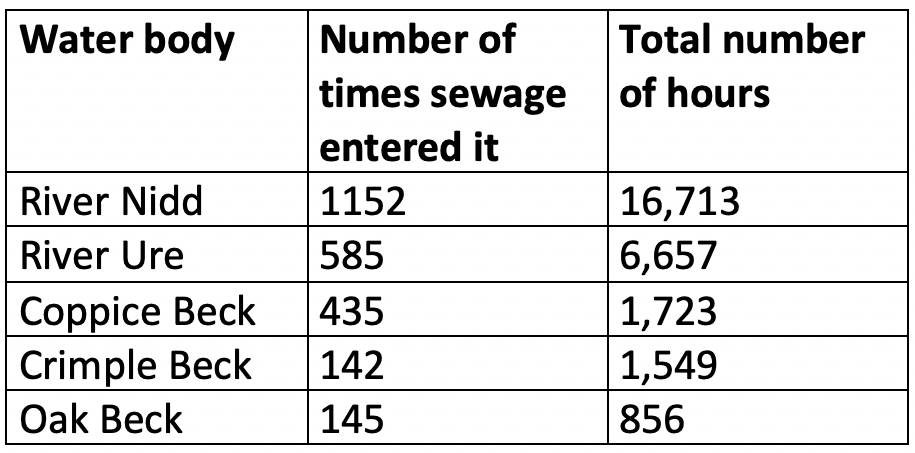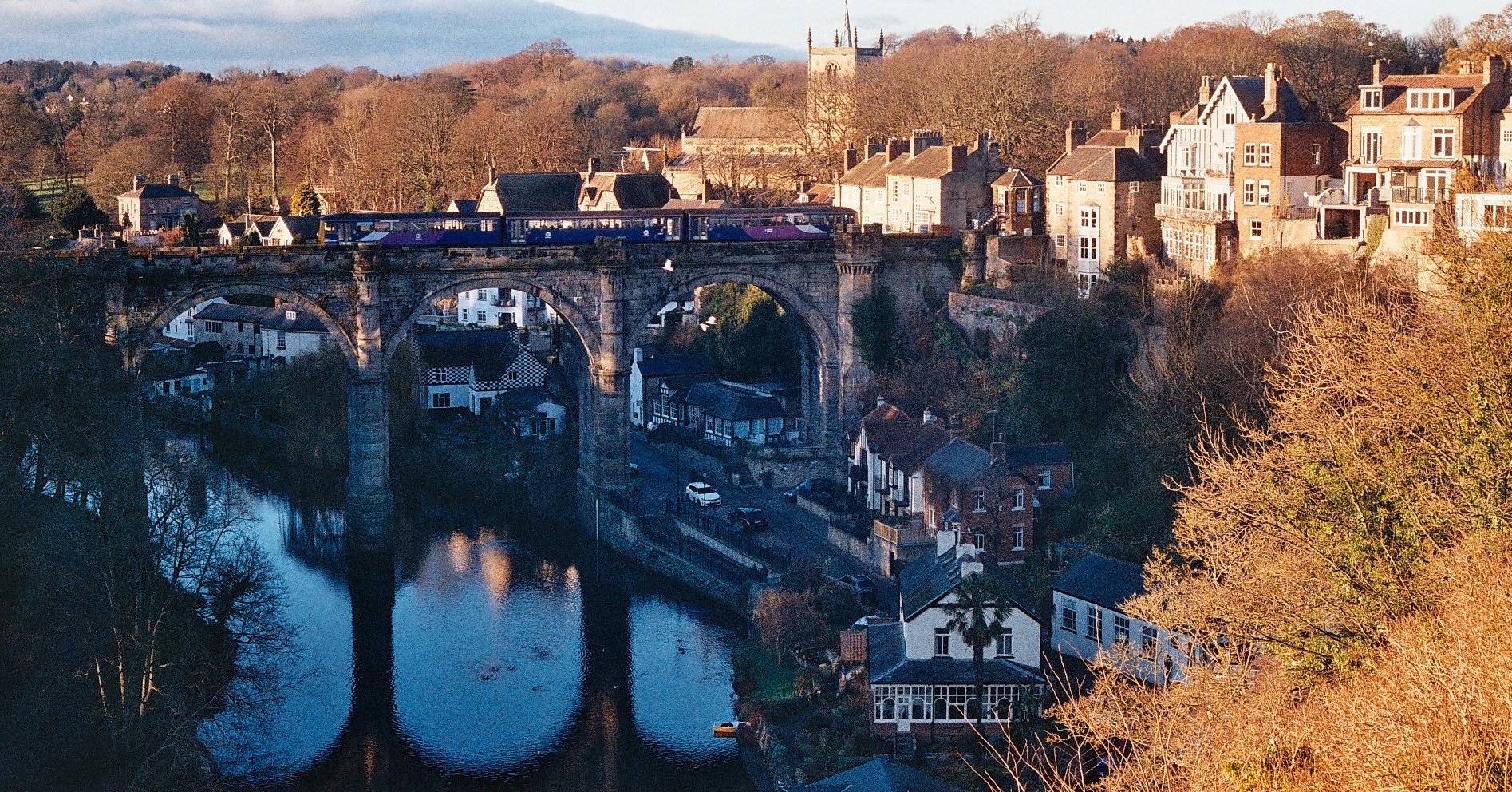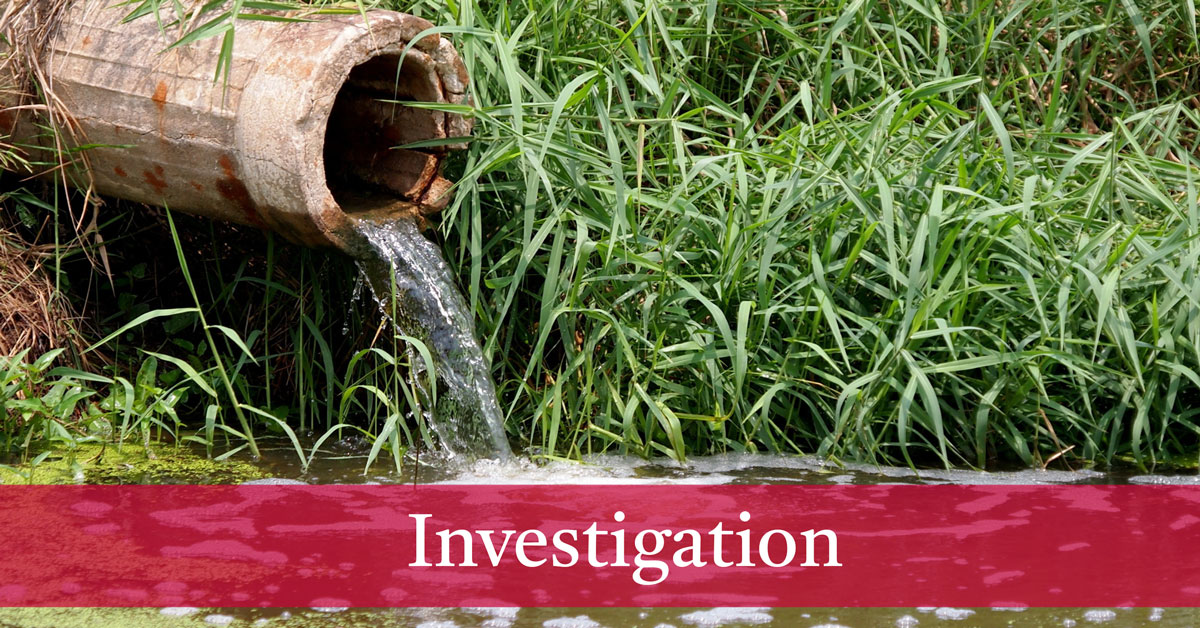Yorkshire Water released raw and untreated sewage into Harrogate district rivers and becks on 3,800 different occasions last year for a total of 36,000 hours.
The figures, which were shared with the Stray Ferret by Yorkshire Water, show the scale of river pollution that the Environment Agency said is causing harm to the environment.
Water companies are legally allowed to release sewage through overflow pipes when the sewage system becomes too full which can happen during increased rainfall.
Some of the data is below:

‘Wouldn’t even let dogs in’
Yorkshire Water said the sewage has been diluted by rainwater and it is investigating the environmental impact of the storm overflows. But people who use and enjoy the rivers said they were concerned about the pollution. Harrogate district rivers such as the Nidd, which runs through Pateley Bridge and Knaresborough, offer some of our most scenic places to visit.
Kath Martin, who runs the Facebook page Keep Nidd Gorge Gorgeous, said the Nidd “can get very nasty” due to the pollution.
She said:
“I wouldn’t let children or even dogs in the water”.
Kath was part of the campaign that fought to protect Nidd Gorge from a major new road and said “it’s an area we have to protect.”
She added:
“It needs someone at the top to do something about the pollution. We have to address it.”
Concern
Whilst the raw sewage that lurks in Nidd or the Ure makes it unappealing for anyone wanting to wild swim, its impact on local wildlife could also be severe.
Environment Agency data from last year revealed that every section of the River Nidd that runs through the Harrogate district failed annual water pollution tests due to the river being contaminated.

David Clayden is secretary of the Harrogate Flyfishers’ Club. Members fish on the section of the Nidd that runs through Darley, close to where Yorkshire Water released sewage over 2,800 hours last year.
He said he was concerned about the figures and added the club will soon testing the water to try and gauge its impact on the fish.
He said:
“Sewage takes oxygen out of the water so fish can’t breathe. This is particularly important for trout which we fish. They need clear water.”
“The club would want to know that every effort is being taken to maintain the river in a lovely, as well as fishable, state.”
Harm to the environment
The Environment Agency told the Stray Ferret that nationally, the number of sewage spills has increased by 27% since 2019.
It said this was, in part, due to increased monitoring of water companies.
Sir James Bevan, chief executive of the Environment Agency, said:
“The Environment Agency is working actively with the water companies to ensure overflows are properly controlled and the harm they do to the environment stopped.”
A Yorkshire Water spokesperson said:
“Combined sewers carry both foul water from homes and businesses as well as rainwater which falls onto impermeable areas such as paved areas, roofs and highways. As rainwater can be unpredictable, we have permitted storm overflows on our sewer network to act as a relief valve. They help to reduce the pressure on sewers during heavy rainfall events and stop the system from backing up and flooding homes and gardens by allowing heavily diluted wastewater to be discharged into watercourses. This is permitted by the Environment Agency and closely monitored by them and us. Many storm overflows have preliminary treatment such as screens or storm settlement before any discharge is made.
“We are seeing a combination of factors, from urbanisation to climate change, frequently testing the design and capacity of our network. At the same time, increased awareness of the operation of storm overflows is driving an important debate on what society sees as acceptable. We’re committed to supporting the Defra Storm Overflow Taskforce activity in ending pollution from storm overflows.
“We will be investing £137 million by 2025 in storm overflow improvements, investigation and increased monitoring. We are also investigating the environmental impact of 158 frequent spilling overflows as part of the Water Industry National Environment Programme (WINEP). As frequency of spill does not necessarily equate to environmental harm and environmental permits do not set spill threshold limits, these investigations will be key to understanding environmental impact, and what action needs to be taken to resolve any impacts.”






